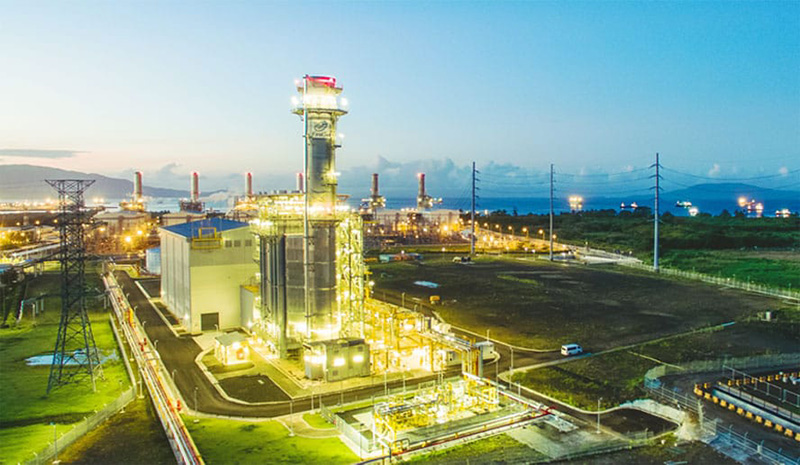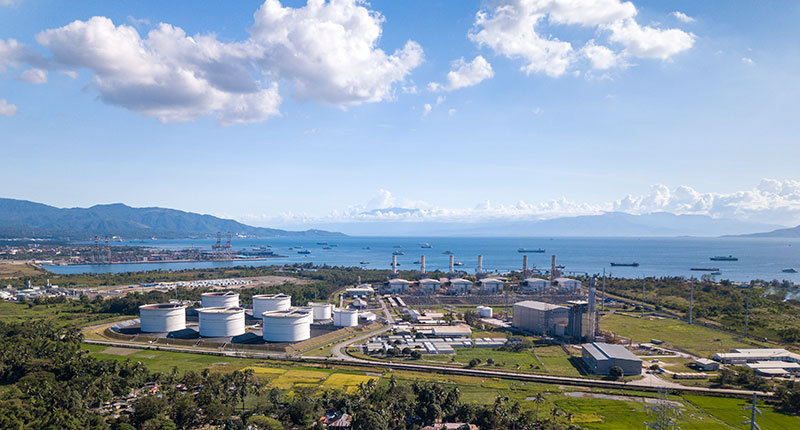Natural gas explained: Here's how First Gen's transition fuel can support PH Energy Plan 2040

MANILA, Philippines — The Philippines has announced a moratorium on the development of new coal-fired power plants as a way to eliminate harmful energy sources and steer the country toward clean, renewable energy.
But that transition cannot happen overnight. The most realistic solution is to replace coal with a cleaner fuel that will support the adoption of renewable energy.
This is why the government is encouraging the development of liquified natural gas (LNG) as an alternative to coal.
Coal and natural gas are non-renewable energy sources. Natural gas, however, is less carbon-intensive, emitting up to 60% less carbon dioxide than coal.
It also does not leave behind by-products like ash, sludge and other particulate matter that are harmful to our health and the environment.
It has also been dubbed as the best “transition fuel” to a future fully powered by renewable energy.
This means that natural gas can serve as a flexible and reliable source of power before the country can fully convert to 100% clean renewable energy.
This ensures stability of the power system while technologies for renewables like wind and solar are still being developed or enhanced.
As the Power Generation Roadmap under the Philippine Energy Plan (PEP) 2020-2040 states:
“In the country’s power generation system, the move is to position natural gas plants as providers for the intermediate or mid-merit supply requirements in the grid. It may be noted that mid-merit gas plants are load-following plants wherein it can easily adjust its electricity production relative to demand fluctuations.”
Moreover, renewables only accounted for 2.4% of total power generation in 2020, but the Department of Energy (DOE) under the
Forming a big part of the problem is the number of strong tropical typhoons visiting the country every year, which makes wind and solar power plants vulnerable to grid reliability issues.
According to the PEP, one way to solve the intermittent electricity is to add the following technologies to 10-20% of the solar capacity needs: (1) battery storage; (2) be hybridized with stable source of energy, such as LNG, hydropower and biomass; and (3) circulating solar thermal.

2040 outlook
In the PEP’s
Since 2001, the Malampaya gas field, located 80km off the coast of Palawan, has been supplying indigenous natural gas to power plants in Luzon and even produced 40% of Luzon’s energy requirements during its peak.
In 2020, the plants provided 20% of power to the country.
Malampaya’s concession, however, is expiring in 2024, as well as the Gas Sales Purchase Agreement of some of the natural gas-fired power plants.
To stabilize the transition fuel’s supply and continue the operation of the power plants even without indigenous natural gas supply, the DOE approved the importation of LNG.
As of 2021, it has approved applications of seven LNG import terminal projects, including the Floating Storage and Regasification Unit (FSRU) Terminal of First Gen Corporation in Batangas City.
First Gen says that this LNG terminal is crucial to maintaining the supply of natural gas as Malampaya reserves run out.
The FSRU has a nominal send-out capacity that is 25% greater than Malampaya’s maximum gas capacity.
To secure dedicated tug services, First Gen has executed Time Charter Party agreements with BW FSRU IV Pte Ltd of Norway and Svitzer of Switzerland.
They will supply and operate four new tugboats to manage the safe arrival and departure of the FSRU and LNG carriers.

In First Gen’s Sustainability Report in 2021, Chairman and CEO Federico Lopez said that the company sees LNG as the bridge fuel to make renewable energy sources reliable.
“Natural gas will also serve as an enabler of intermittent renewable energy like wind and solar, which will help keep the lights on when these sources are not available,” he said.
“Even as we fulfill our role of bridging the entry of more renewable energy to the grid, we are also planning our own decarbonization. To meet that net zero carbon future, our natural gas plants will eventually need to be repowered, possibly with clean hydrogen, as technology develops and attain commerciality.”
At the GRI-SM-ASEAN Sustainability e-Summit, First Gen divulged its eventual shift to hydrogen for its total decarbonization strategy. The power company maintains its commitment to its “net zero” goal by 2050.
First Gen President and COO Francis Giles Puno added that natural gas’ “role as a transition fuel paves the way for the widespread use of variable energy sources.
It also has the potential to ride on innovation that could make use of the existing gas turbine technology to be powered by green hydrogen.”
- Latest



























